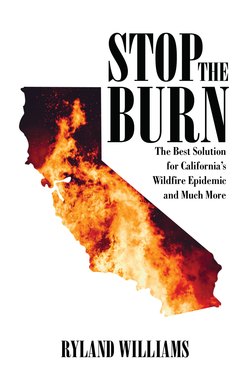Читать книгу Stop The Burn - Ryland Williams - Страница 3
На сайте Литреса книга снята с продажи.
Chapter 2 The Years Before the Firestorms
ОглавлениеAfter school, I remained in Sonoma County, and even though I was reminded of the fire every time I drove on Wallace Road, my fear of another wildfire was short lived. The earthquake that shook Santa Rosa in 1969, had replaced one fear with another. Little did I know that over fifty years later, I would witness a fire in the same location, with almost an identical footprint, that would level more than 5,100 homes and numerous businesses in Santa Rosa, and become California’s most destructive and deadliest wildfire to date.
I became extremely familiar with California’s great outdoors. I grew up an outdoorsman, and as a camper and fisherman, Northern California has provided me with an abundance of the most wonderful forests, lakes, rivers, and streams. I’m certain I have missed very few!
In 1969, at the age of 23, I took a sales job with Best Foods, and for eight years spending one week of every month traveling Mendocino and Humboldt counties. Over time, I became very fond of our great redwood forests, and familiar with the lumber industry as it was then. Sadly though, I witnessed an abuse of our forests and some ugly clear cuts. At the time, lumber was by far the largest and most powerful industry of the two counties, and there was a lumber mill in almost every town. In Humboldt County, the town of Scotia was built and owned by the Pacific Lumber Company.
I had left Best Foods, and in 1978, I began a career in real estate and residential development. Over the years, I learned much about land use and planning, building codes and regulations, easements, and construction techniques. It became my passion to create solutions to effectively solve the problems of development. I worked with fire departments to incorporate fire prevention with building setbacks, fire buffers, fireproof fencing, and the fire access and emergency exit roads necessary for the safety of development. By effectively dealing with all of the necessary agencies, and navigating my way through the approval process, I obtained approval on more than a dozen residential subdivisions in Sonoma, Napa, and Solano counties.
It had been 27 years since the Hanly Fire, when on Saturday, Oct. 19, 1991, a five acre grass fire broke out in the hills of Berkeley. The fire that firefighters thought had been completely extinguished, re-ignited on Sunday morning. Driven by wind gusts of 65 miles per hour, the fire rapidly spread through the suburban wildland-urban inter face in the hills of northern Oakland and southeastern Berkeley. The Oakland firestorm, or Tunnel Fire as named by Cal Fire, became the most destructive and deadliest fire to date in California. I took particular notice because I had two cousins that lost homes in the fire.
Tunnel Fire Facts (Wikipedia):
1,520 acres burned
2,843 single-family homes destroyed
437 apartment and condo units destroyed
25 fatalities
150 known injured
As the years passed, I observed the deterioration of California’s open space and once pristine forests. After the 80’s, as most of the mills closed in the lumber towns, the bustling and vibrant lumber business became a thing of the past. There became very little need for the logger, mill worker, or lumberman as most of our lumber came from out of state or abroad. Unemployment became extremely high in many of those once prosperous little towns. Our forests became overgrown with brush and with diseased and dead trees that needed to be thinned. In the Sierra Nevada, once one of the most beautiful forests in the world, it is estimated that there are three to four times the number of trees per acre as when its forest was healthy. The trees are now competing for food and water, and many become sick, insect infested, and die. At no time, did I realize that our forests and open space now provided the fuel for the firestorms that would become California’s wildfire epidemic.
On July 12, 2014, fifty years after the Hanly Fire and three years prior to the Tubbs Fire, Press Democrat columnist and author Gaye LeBaron chronicled the Hanly Fire as well as the Nunns Valley Fire that both began on Sept. 19,1964. Both burned out of control for six days. Regarding the Hanly Fire she wrote: “Think for a moment about what stands in that fire path now, 50 years later – Fountaingrove , Skylane, hotels, medical buildings, fill in the blanks.” Did she have a premonition?
